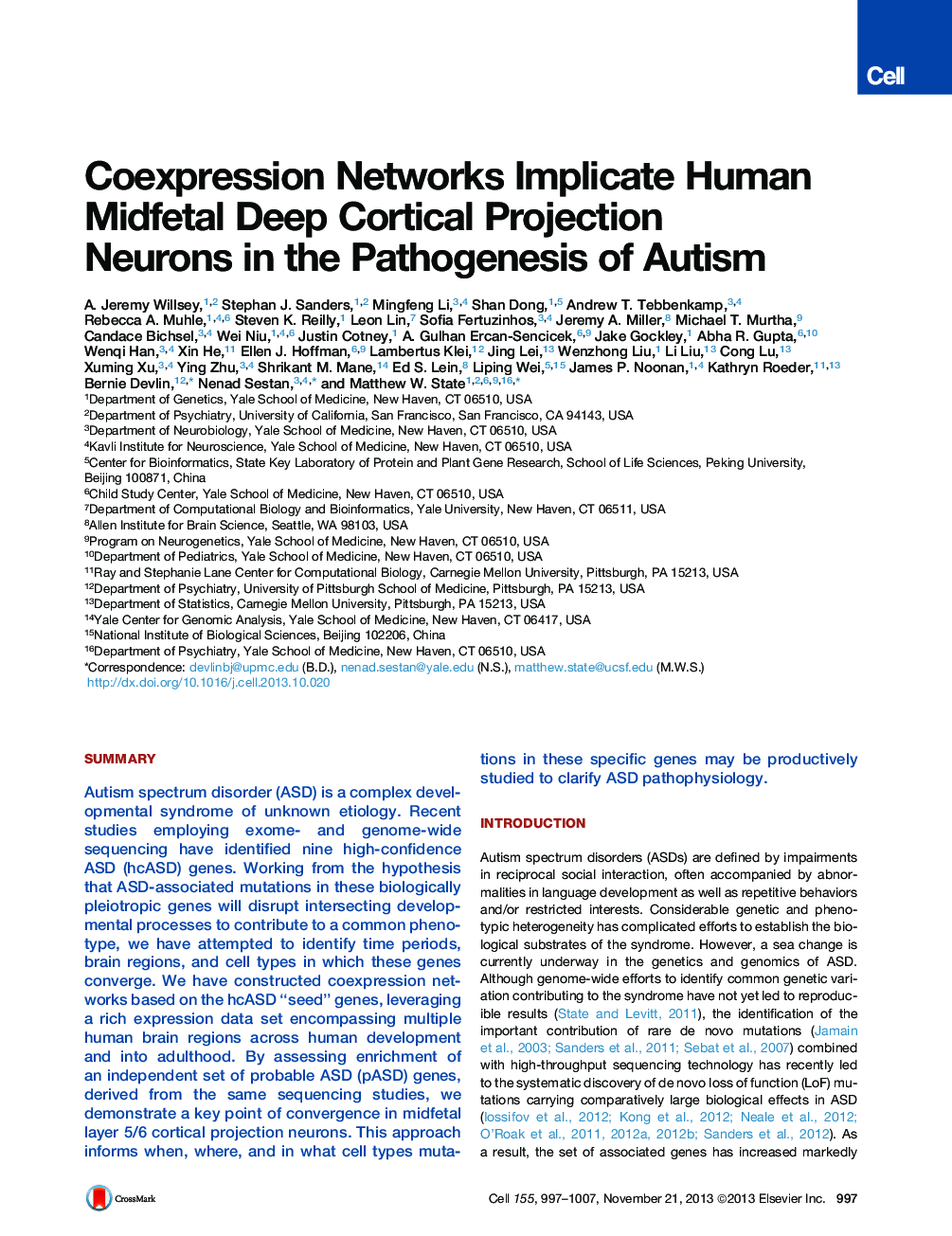| Article ID | Journal | Published Year | Pages | File Type |
|---|---|---|---|---|
| 2035640 | Cell | 2013 | 11 Pages |
•Exome sequencing identifies a novel ASD gene, Ankyrin 2, neuronal (ANK2)•Data from developing human brain are used for coexpression analyses of nine ASD genes•ASD genes converge in midfetal frontal cortex deep projection neurons•Approach clarifies when, where, and in what cell type to study specific ASD mutations
SummaryAutism spectrum disorder (ASD) is a complex developmental syndrome of unknown etiology. Recent studies employing exome- and genome-wide sequencing have identified nine high-confidence ASD (hcASD) genes. Working from the hypothesis that ASD-associated mutations in these biologically pleiotropic genes will disrupt intersecting developmental processes to contribute to a common phenotype, we have attempted to identify time periods, brain regions, and cell types in which these genes converge. We have constructed coexpression networks based on the hcASD “seed” genes, leveraging a rich expression data set encompassing multiple human brain regions across human development and into adulthood. By assessing enrichment of an independent set of probable ASD (pASD) genes, derived from the same sequencing studies, we demonstrate a key point of convergence in midfetal layer 5/6 cortical projection neurons. This approach informs when, where, and in what cell types mutations in these specific genes may be productively studied to clarify ASD pathophysiology.
Graphical AbstractFigure optionsDownload full-size imageDownload high-quality image (371 K)Download as PowerPoint slide
